Houston Naturama Challenge Week 1
In case you found your way here without knowing the rules, here’s a link to the Houston Naturama intro page.
- Find each of these plants
- Snap a photo
- Upload it to iNaturalist
The easiest way is to take the photo from within the app itself. If you’re not sure if the plant you are looking at is one of the challenge plants, snap it anyway and let iNaturalist tell you what you’ve got. There are no wrong answers in this challenge.
For each plant, I linked to a page that did a good job of describing and showing photos. If you want to see more, Google is your friend!
Week One challenge:
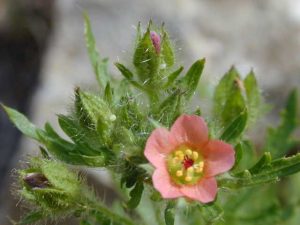 The loveliness of tiny native flower is reserved for those who live on a scale much smaller than our own. But look at this flower and imagine it five inches in diameter. It would knock you over with its beauty. BTW, when hunting for the bristle mallow, watch out for a look-alike. Scarlet pimpernel is another tiny wildflower whose bloom looks very much like this. The leaves will help you tell them apart. The bristle mallow is called bristle for a reason. It looks very hairy! If you click on the link to fleabane, below, the blog post will also show you a photo of the scarlet pimpernel. Carolina bristle mallow is a low-growing, creeping plant and the flowers are very small and very beautiful.
The loveliness of tiny native flower is reserved for those who live on a scale much smaller than our own. But look at this flower and imagine it five inches in diameter. It would knock you over with its beauty. BTW, when hunting for the bristle mallow, watch out for a look-alike. Scarlet pimpernel is another tiny wildflower whose bloom looks very much like this. The leaves will help you tell them apart. The bristle mallow is called bristle for a reason. It looks very hairy! If you click on the link to fleabane, below, the blog post will also show you a photo of the scarlet pimpernel. Carolina bristle mallow is a low-growing, creeping plant and the flowers are very small and very beautiful.
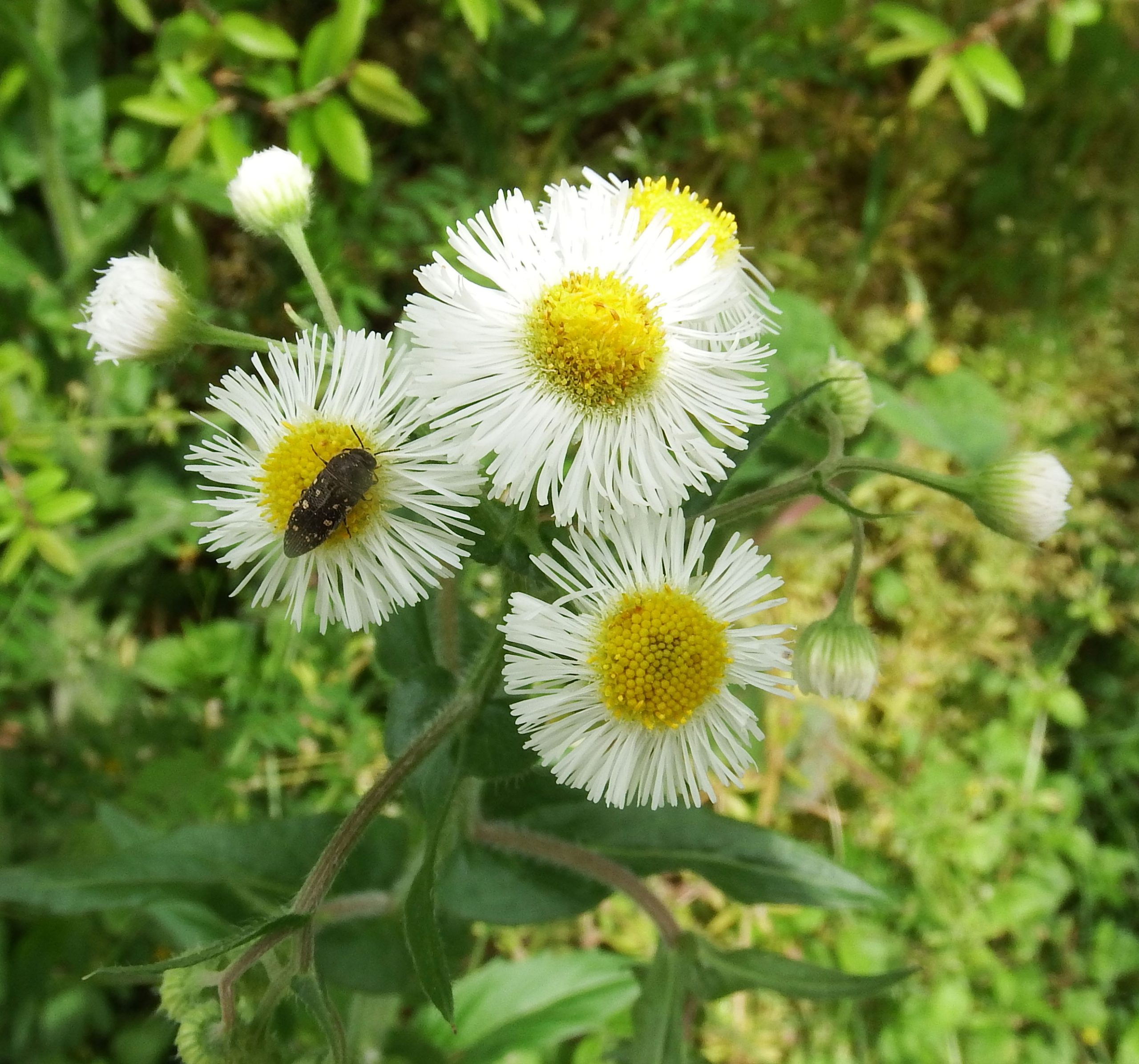 I love this plant because I imagine that I could actually draw one. Two circles, the inner one yellow the outer one frilly. This is a great early-season native. It’s called fleabane because it was imagined to repel fleas. Maybe it once did, but our fleas are much tougher than that. Pollinators, however, love them. If your camera can take a close-up and you catch a bee or fly, submit that to iNaturalist, too. My first ever iNaturalist submission was fleabane and I inadvertently captured a rare bee. It’s hard to find fleabane without any insects on it. Fleabane flowers are usually less than an inch across, but the plants can stand over a foot high. Or they can bloom while about 4 inches off the ground. But you can’t miss those bulls-eye flowers.
I love this plant because I imagine that I could actually draw one. Two circles, the inner one yellow the outer one frilly. This is a great early-season native. It’s called fleabane because it was imagined to repel fleas. Maybe it once did, but our fleas are much tougher than that. Pollinators, however, love them. If your camera can take a close-up and you catch a bee or fly, submit that to iNaturalist, too. My first ever iNaturalist submission was fleabane and I inadvertently captured a rare bee. It’s hard to find fleabane without any insects on it. Fleabane flowers are usually less than an inch across, but the plants can stand over a foot high. Or they can bloom while about 4 inches off the ground. But you can’t miss those bulls-eye flowers.
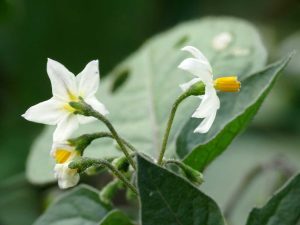 Any wild nightshade qualifies. Notice the shape of the flower. All the nightshades have tightly bundled reproductive bits and the petals sometimes seem to be swept back. They can have berries (green or dark purple) and all of them will at some point in the season. I’m specifying wild nightshades because you may have cultivated nightshades in your vegetable garden. Tomatoes, potatoes and eggplant are all nightshades. So is belladonna, also known as deadly nightshade. Our wild nightshades are in the “probably-not-going-to-hurt-you” category, but I wouldn’t eat one. The link is to the Wikipedia page for black nightshade. Most of what we have looked rather like this. This plant can be large enough that you couldn’t overlook it in your yard. Check unkempt spaces for this one. Nightshades are a huge and useful family of plants, many of them native to Texas.
Any wild nightshade qualifies. Notice the shape of the flower. All the nightshades have tightly bundled reproductive bits and the petals sometimes seem to be swept back. They can have berries (green or dark purple) and all of them will at some point in the season. I’m specifying wild nightshades because you may have cultivated nightshades in your vegetable garden. Tomatoes, potatoes and eggplant are all nightshades. So is belladonna, also known as deadly nightshade. Our wild nightshades are in the “probably-not-going-to-hurt-you” category, but I wouldn’t eat one. The link is to the Wikipedia page for black nightshade. Most of what we have looked rather like this. This plant can be large enough that you couldn’t overlook it in your yard. Check unkempt spaces for this one. Nightshades are a huge and useful family of plants, many of them native to Texas.
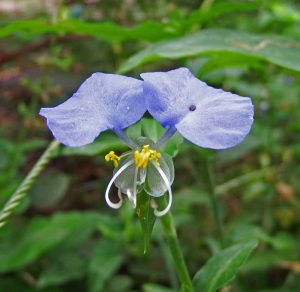 You undoubtedly know these. They are omnipresent. I even ran into them in Tanzania. I linked to a blog post in which I wax rhapsodic about these fascinating little flowers. They come in different flavors, but the one thing almost all of them share is their bright blue color and almost all of them have two enlarged petals and one smaller petal. It’s this feature that gave them their taxonomic name. You can read all about it in the linked blog post.
You undoubtedly know these. They are omnipresent. I even ran into them in Tanzania. I linked to a blog post in which I wax rhapsodic about these fascinating little flowers. They come in different flavors, but the one thing almost all of them share is their bright blue color and almost all of them have two enlarged petals and one smaller petal. It’s this feature that gave them their taxonomic name. You can read all about it in the linked blog post.
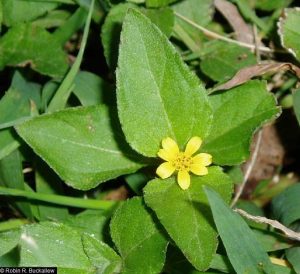 The link takes you to the Lady Bird Johnson Wildflower Center. Straggler daisy is a lovely tiny little yellow flower. It’s native and really common in Texas. If you are trying to maintain a lawn, you might not appreciate the competition from this hardy native that actually likes shade. But the lawn doesn’t feed any pollinators and this does! There is, as usual, a look-alike also in bloom now. The look-alike is creeping buttercup. The buttercup isn’t native, but it is a tiny bit showier than the straggler daisy. You can tell them apart (on close observation) by both the shape of their leaves and by the fact that the straggler daisy has two tiny indentations at the end of every petal. The buttercups are smooth.
The link takes you to the Lady Bird Johnson Wildflower Center. Straggler daisy is a lovely tiny little yellow flower. It’s native and really common in Texas. If you are trying to maintain a lawn, you might not appreciate the competition from this hardy native that actually likes shade. But the lawn doesn’t feed any pollinators and this does! There is, as usual, a look-alike also in bloom now. The look-alike is creeping buttercup. The buttercup isn’t native, but it is a tiny bit showier than the straggler daisy. You can tell them apart (on close observation) by both the shape of their leaves and by the fact that the straggler daisy has two tiny indentations at the end of every petal. The buttercups are smooth.
If you need help or have something to say, please email me at blog@alisakline.com.

